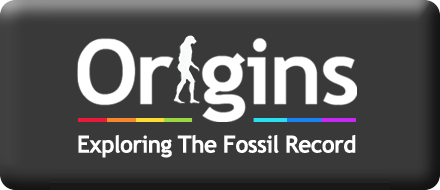 |
 |
APPENDIX 2 - TWYFELFONTEIN SITE REPORT BY SVEN OUZMAN |
14/18 |
| |
|
Site 14 – Twyfelfontein Main Site Complex |
Beim Grossen Malereiblock
Site I on Scherz’s Map (21.2 in
Figure 14)
S 20° 35’ 56’’ / E 14° 22’ 23”
Site Description
This site comprises a large overhang making for a cave-like space up to 2m deep and up to 3m high (but typically 1.5m) on a large rock block with a sloping and reasonably extensive floor area. This cave-like overhang is sited next to large upstanding rock block complex. The overhand has Bushman rock paintings and Bushman rock engravings, while the upstanding rock block has Bushman rock engravings. This site and its outlier – Site 15 - marks the southernmost extent of the main Twyfelfontein Site Complex. The site is south of the small tributary that separates Site 10 from Sites 11-13. There is a good view down the valley and towards the main site complex. This site is on the 640m contour and just outside of the main declared monument area. There is a noticeable echo and wind roar at this site.
Associated Archaeology
The overhang part of the site has a very hard, gritty floor that slopes. Rain and tourists have picked the surface of this site clean of artefacts. There are stone tools further down the slope and also bone and ostrich eggshell, fragments.
Description of Beim Grossen Malereiblock’s rock art
There are about 20 Bushman rock engravings and 25 Bushman rock paintings here (with perhaps some Khoekhoen art also present), probably the best-preserved paintings in the valley.
Overhang site: The overhang interior wall has two facets, both of which are painted.
Facet 1: On the one facet are the well-preserved torsos of 7 buck painted in red paint with an average dimension of 150mm x 90mm. One of these buck is gracile and may represent a springbok, while the other six are sturdier and may represent oryx, though one sturdy buck has very kudu-like legs. There is a large 400mm x 290mm white buck painted on top of the red buck torsos. There is also a white belly of an oryx surviving as a remnant of a once-whole animal painting. There are at least 4 ostrich heads in white paint and two very enigmatic motifs. The enigmatic motifs consist of alternating thin red and while parallel lines arranged in an open triangle or roughly arrow shape. There does not seem to be any paint nearby and it is not yet possible to say what these enigmatic motifs may signify. There is also a partial red outline buck.
Facet 2: On the overhang’s other facet there are four red buck painted, one of which has part of an eland-like head surviving. This buck has dimensions of 360mm x 230mm. There are also three fragmentary human figure paintings. There is an upside-down nested catenary curve. There is then a central red finger-painted motif enclosing two red lozenge shapes. There is an incomplete second such red finger-painted outline. These finger paintings may represent a Khoekhoen presence. There is also a painted and partially rubbed out arrow motif and a recent engraved ‘d’-like shape.
South wall: Just outside the painted shelter are four pecked-infill engraved spoor – 1 antelope, 2 equid and a horseshoe-like spoor, probably also zebra. There are two other pecked areas. Less than 10m from the paintings there are 5 more spoor associated with little dots/cupules.
Passageway: Between the south-eastern painted facet and the spoor engravings is a narrow passageway, formed where the rocks abut. Inside this passageway 2m and in an area that gets no sunlight and which is dark, there is a very detailed rock painting of a kudu in red with white body stripes and no apparent head (
Figure 94). This rock painting is very difficult to see and one wonders to what purpose it was placed here. It does not seem as if the engraved rock block rolled onto the painted shelter either, making it seem as though the artists intentionally sought out a dark and hidden location for her or his art.
Upstanding rock block complex: Immediately north-north-west of the painted overhang is a huge rock block complex that has Bushman rock engravings on it northern and western face. There is a pecked-outline equid, 2 fine pecked-infill giraffe – one large at 800mm x 360mm and the other with a very short neck, 3 very schematic animals in a rough pecked-outline. To the north are a third partial pecked-infill giraffe and perhaps an accompanying juvenile, part of which has flaked off. There is a schematic pecked-outline ?equid and the pecked-outline head of a third animal. A fourth giraffe emerges out of a large circular exfoliated area of rock. There may be an abraded groove below the main image cluster.
Threat(s) to site: The imagery is mostly in a good condition with the rock paintings being the best-preserved in the valley. There is, however, spalling of the thin outer layer of Etjo sandstone. There is also quite a lot of stone-scratched graffiti, including two human stick figures.
→
A Survey into the Relationship between
Animal-Engravings & Cupules
→
The Rock Art of Twyfelfontein
→
The Rock Art of Namibia
→
The African Rock Art Archive
→
Bradshaw Foundation
Like us on Facebook & Follow us on Twitter to receive news & updates:







